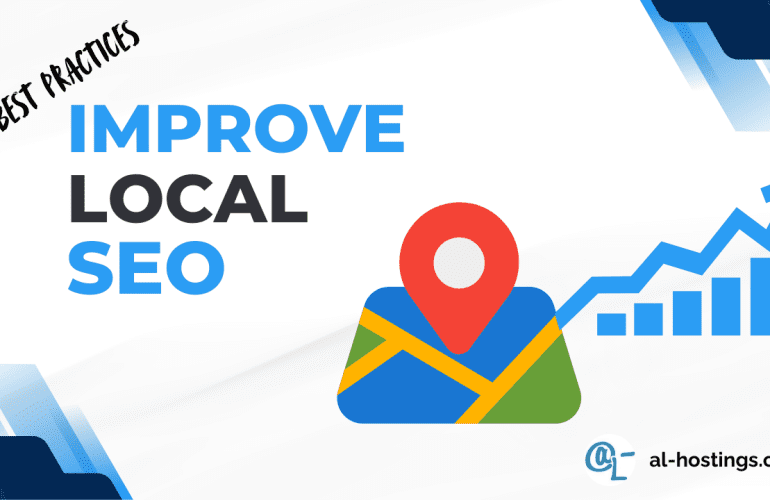Index
- 1. Introduction
- 2. Why SEO and UX Matter
- 3. Signs You Need an SEO or UX Improvement
- 4. Practical Evaluation of Your Website: Checklist
- 5. When to Prioritize SEO or UX Improvement
- 6. How to Plan Your Website’s SEO or UX Improvement
- 7. Case Studies – Real Examples
- 8. Conclusion and Next Steps
1. Introduction
If you have a website for your business – as a freelancer, SME or startup – you might be wondering: Is my website fine as it is, or does it need an SEO or UX improvement?
In this article, we’ll guide you to identify key indicators, understand the difference between SEO and UX, and know when and how to take action.
2. Why SEO and UX Matter
When we talk about SEO or UX improvement, we’re addressing two fundamental areas to make your website not only visible but also attractive, useful, and profitable.
- SEO (Search Engine Optimization): Helps your website appear in relevant searches, generate organic traffic, and gain better visibility against competitors.
- UX (User Experience): Refers to how users interact with your website – whether they quickly find what they need, feel comfortable navigating, and take action (contact, buy, subscribe, etc.).
It’s not about choosing one or the other – both work together. A site optimized for SEO but with poor UX will attract visitors who leave quickly. A website with excellent UX but no traffic is a missed opportunity.
In fact, studies such as Top Content show that the relationship between UX and SEO is key to keeping users engaged and improving ranking.
3. Signs You Need an SEO or UX Improvement
Here are some indicators you can check right now that suggest your site likely needs an SEO or UX improvement:
3.1 Signs That SEO Needs Improvement
- Your organic traffic is stagnant or has dropped without a clear reason.
- You don’t appear in search results for your business’s relevant keywords.
- Most of your visits come from pages that don’t convert or have little relevance.
- Your pages aren’t properly indexed or you have many 404 errors or poorly configured sitemaps.
- Your site loads too slowly, affecting search visibility.
3.2 Signs That UX Needs Improvement
- Your bounce rate is very high and users leave quickly.
- Users struggle to find what they’re looking for or can’t find it at all.
- Your design isn’t mobile-friendly or is hard to use on small screens.
- The conversion process (form, cart, etc.) is confusing, lengthy, or causes drop-offs.
- You receive recurring complaints or negative feedback about navigation, readability, or design aesthetics.
3.3 Mixed Signals Requiring a Joint Evaluation
Sometimes problems overlap. For example: a slow-loading site (hurts UX) also damages SEO; or confusing navigation makes SEO metrics drop. In such cases, you need a comprehensive SEO or UX improvement.

4. Practical Evaluation of Your Website: Checklist
To help you out, here’s a practical checklist you can apply right now. Mark or note the points that fail.
SEO Checklist (Search Engine Optimization)
- Does your site have unique, optimized title and meta description tags?
These are the texts that appear in Google search results. If well-written and keyword-optimized, they improve ranking and attract more clicks. - Do you have clean, user-friendly URLs?
A good URL is short, readable, and descriptive (e.g., /services/seo instead of /page?id=123). - Is your site responsive and mobile-friendly?
Google prioritizes mobile-optimized sites. If your site doesn’t display well or is hard to navigate on phones, you’ll lose users and rankings. - Does your site load fast (under 3 seconds)?
A slow site drives visitors away and hurts rankings. Test your speed at PageSpeed Insights. - Do you have a sitemap and robots.txt file configured?
These help Google understand your structure and know which pages to crawl. - Are you using headings correctly (H1, H2, H3)?
They structure your content like an outline. The H1 should include the main keyword; H2 and H3 organize the information hierarchically. - Are your images optimized?
Images should have appropriate size (to avoid slowing the site) and useful alt text with a relevant keyword if possible. - Does your site have quality backlinks?
Backlinks from other reputable sites increase your authority and improve rankings. - Does your content meet search intent?
Google values content that genuinely helps users. Use relevant keywords but focus on providing solutions and real value.
UX Checklist (User Experience)
- Is the navigation menu clear and simple?
Users should easily understand where they are and how to reach any section in one or two clicks. - Are typography and colors easy to read?
Readable text with good contrast and size ensures comfortable reading and keeps users from leaving. - Are call-to-action buttons (CTAs) visible and direct?
Phrases like “Request a Quote” or “Contact Us” should stand out visually and be well-positioned to invite action. - Is the conversion process simple?
Short forms, clear steps, and fewer clicks increase the chance of turning visitors into customers. - Is your site accessible to all users?
Ensure people with visual, motor, or cognitive difficulties can navigate easily (alt text, contrast, keyboard navigation…). - Does your website give feedback to users?
For example, showing confirmation messages after form submission or error alerts builds trust. - Is the content visually well-structured?
Use short paragraphs, headings, lists, and white space so users can “scan” content quickly. - Does it work well on all devices?
Test your site on different mobiles, tablets, and browsers. Even small visual errors can greatly affect UX.
If you’ve marked many red flags, it’s clear: your site needs an SEO or UX improvement. Don’t worry – the next section shows you how to prioritize and plan your improvement.
5. When to Prioritize SEO or UX Improvement
In practice, you should decide which area to work on first based on your site’s and business’s situation. Here are some reflections:
5.1 Prioritize SEO Improvement When…
- Your organic traffic is minimal or non-existent.
- Your website doesn’t appear in key searches or your keywords are too generic.
- Your technical setup (indexing, speed, structure) is very disorganized.
5.2 Prioritize UX Improvement When…
- You have traffic, but conversions are low or users leave before engaging.
- Your website is outdated, poorly navigable, or hard to use on mobile.
- Your brand or sector requires a premium experience to stand out.
5.3 Integrated Improvements When…
In many cases, the best solution is a combined approach: technical SEO fixes + UX optimization. For example: improving speed (SEO) + simplifying checkout (UX). Aim for a holistic “SEO or UX improvement” strategy.
6. How to Plan Your Website’s SEO or UX Improvement
Here’s a step-by-step plan to approach this process:

6.1 Initial Diagnosis
Perform an in-depth analysis: tools like Google Search Console, Google Analytics, Hotjar, or Lighthouse can show where you’re failing.
Identify pain points: speed, bounce rate, navigation, or lack of visibility.
6.2 Goal Setting
For example:
- Increase organic traffic by 30% in six months.
- Reduce load time to under 2.5 seconds.
- Improve the conversion rate or lower the bounce rate to below 50%.
6.3 Prioritize Actions
Order tasks by impact and ease of implementation. For example:
- Technical SEO fixes (indexing, speed).
- Content improvement (keywords, search intent).
- Navigation redesign and mobile experience.
- Conversion process optimization (forms, CTAs).
6.4 Implementation and Monitoring
Execute the improvements and track metrics constantly. The key is to measure before and after – speed, time on page, conversions, and ranking positions.
6.5 Iteration and Continuous Improvement
The digital environment changes – algorithms, user habits, devices… That’s why SEO or UX improvement isn’t a one-time task but a continuous process.
7. Case Studies
Below are two example cases to help you visualize this in action. (These aren’t real brands I can mention, but common scenarios.)
Case A: Good Visibility, Low Conversion
A service company’s site gets relevant traffic but only 1% of visitors contact them. Upon review, the site was slow, navigation confusing, and the contact form hidden.
Here, a UX improvement was the priority, though some SEO elements (content structure and headings) were also adjusted.
Case B: Not Showing in Important Searches
An e-commerce selling niche products didn’t rank for its main keywords. Review revealed indexing issues, duplicate URLs, and poorly optimized content. The focus was on SEO improvement, followed later by UX work (better catalog, filters, navigation, speed).
Case C: Recovering Impressions and Conversions (Real Example)
This is a real case from one of our clients – a small company that renewed its site through the Kit Digital program.
Shortly after redesigning, impressions on Google dropped dramatically. Despite investing in Google Ads, visits weren’t turning into leads or calls.
What Happened?
- Old URLs were not preserved, so Google couldn’t find previously ranked pages.
- Individual product pages were deleted, losing valuable traffic.
- The new structure didn’t facilitate conversions or direct contact.
How We Fixed It
- We implemented 301 redirects to recover lost pages and restore organic traffic.
- We created optimized product pages with content tailored to search intent.
- We improved the user experience by adding visible contact buttons for email and WhatsApp.
Results
- Progressive recovery of Google impressions and clicks.
- Significant increase in leads over the following months.
And Afterwards…
- We launched a corporate blog to boost content SEO, which keeps growing.
- We perform monthly SEO and UX monitoring to maintain sustainable growth.
If your business has lost visibility or conversions after a redesign – or you simply want to improve your digital performance – contact us and we’ll review how to optimize your website to get it performing at its best again.
8. Conclusion and Next Steps
Detecting whether your website needs an SEO or UX improvement is a key step to ensuring your digital presence works as it should: visible, attractive, and effective.
I recommend going through the checklist, identifying weak points, and prioritizing them by impact. If needed, getting expert help is totally reasonable — a good audit or consultation can save you time and resources.
At ALHOSTINGS, we specialize in web design, development, maintenance, and SEO+UX optimization for freelancers and small businesses. If you think your website might need an improvement, get in contact and let’s talk about how to transform your digital presence.
Start today and take action! Your website deserves to match the quality of your business.

WordPress Expert, SEO & UX Optimization | I help freelancers and SMEs grow their business. | Web Design and Development Specialist for Startups, SMEs, and Personal Projects




